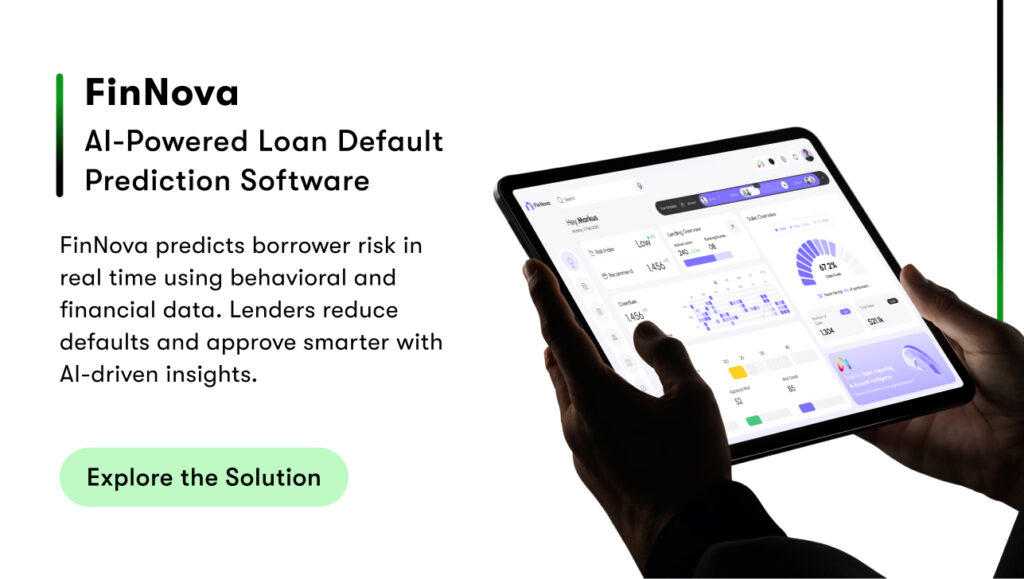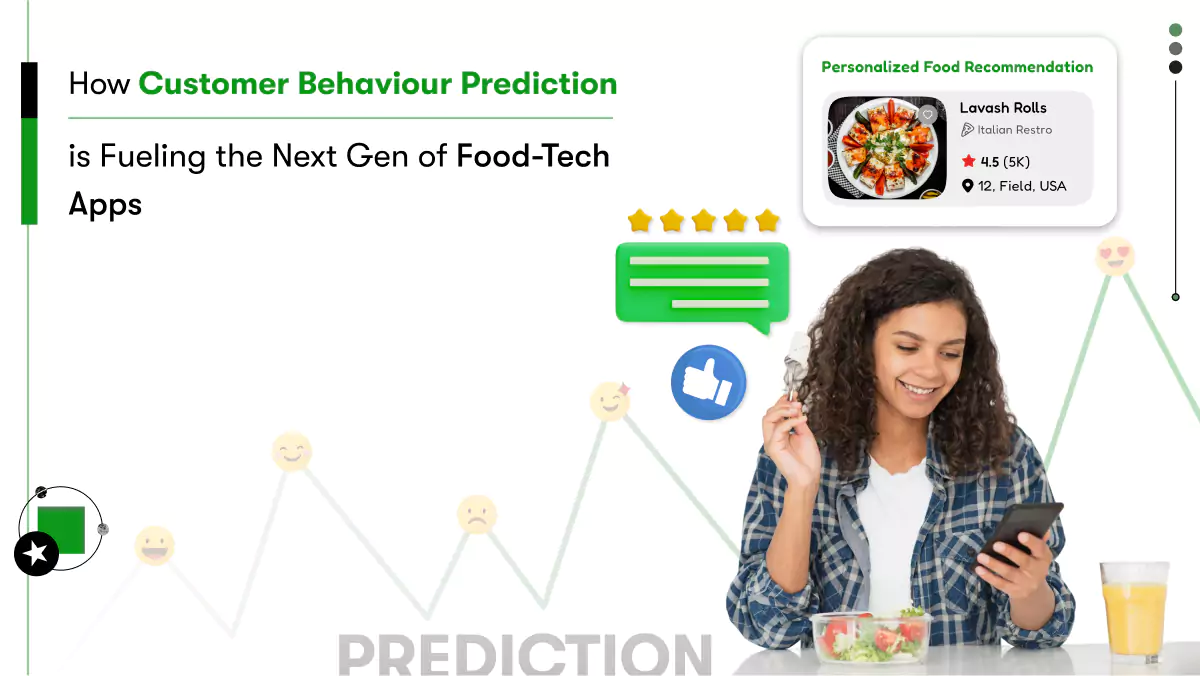Predictive Analytics for fraud detection is your firewall against financial silence. The kind that doesn’t alert, just empties accounts. No warning. No noise. Just a credit request, a payment, a delay, and then the money is gone.
In 2024, fraud losses crossed $12.5 billion, and 38% of victims lost money, up from 27% the year before (Federal Trade Commission data). That’s not a threat. That’s reality. Most fraud doesn’t break your system. Fraud slides through unnoticed, too subtle for fixed rules to catch.
Predictive models catch behavioral shifts before those patterns turn into losses. These models learn, score, adapt, and act inside your product. But most teams treat predictive analytics like plug-and-play software. Predictive analytics doesn’t work that way.

You need a partner who understands fintech behavior, fraud logic, and your product’s risk DNA. One bad model would not just flag the wrong users. Bad models will let the real ones walk straight through.
Keep reading to learn how predictive analytics actually prevents fraud and how you can apply predictive analytics to your fintech product.
How Much Can Fraud Actually Hurt a Fintech Business?
Fraud doesn’t always show up right away. Fraud often starts small and goes unnoticed. While that happens, money is lost, teams get distracted, and users start leaving. One case can lead to bigger problems across your business.
What is the real impact of fraud on fintech businesses?
Fraud steals more than money. It disrupts systems, drains teams, and pushes away real users, all while looking small on the surface.
When fraud enters your platform, the damage rarely stops at one transaction. What follows is expensive, exhausting, and difficult to clean up. The losses extend far beyond stolen funds. You lose trust, time, and growth. Here’s how those costs break down:
Here’s how fraud costs add up for fintech platforms.
Direct financial loss
Fraud leads to unauthorized transactions, chargebacks, unpaid loans, and drained wallet balances. These losses look small individually, but they quickly add up, especially when the same user exploits the system more than once.
Operational costs
Product teams shift from building features to managing fraud-related escalations. Engineers pause development. Managers get pulled into manual reviews. Progress slows across departments, and valuable resources go toward patching what should have been prevented.
Customer churn
Outdated fraud systems flag safe users. These false positives frustrate loyal customers. Many of them quietly uninstall the app or abandon their accounts, and most never return.
Compliance penalties
Fintech businesses must report fraud correctly and within strict timelines. Delays or blind spots can trigger audits, lead to financial penalties, or even block your platform from operating in regulated markets.
Trust erosion
One breach can damage years of hard-earned trust. Users stop referring. Investors hesitate. Support tickets spike. Acquiring new customers becomes more expensive as brand reputation takes a hit.
System fatigue
Rule-based engines trigger false alerts constantly. These alerts create noise, not insight. As a result, your fraud team starts ignoring patterns, and the real threats slip through while everyone is busy chasing shadows.
Let’s understand the seriousness and impact of fraud in the fintech industry through a hypothetical scenario.
A Hypothetical Case: What a $500 Fraud Incident Really Costs a Fintech Business
A fintech lender loses $500 to a fraudster. That amount feels manageable.
But the real cost starts after the fraud.
- Operations slow down as the team investigates.
- Support spends hours on one ticket.
- A loyal user gets wrongly flagged and churns.
- The platform rating drops, reducing app store visibility.
- Acquisition costs rise.
- Recovery efforts take days.
What began as a single case turns into a $5,000+ loss, purely from hidden fallout. And if these cases go undetected for weeks, the loss multiplies.
Predictive analytics for fraud detection in fintech prevents this spiral. It doesn’t just stop fraud. It reduces manual work, protects real users, and shields your business from long-term financial damage.
What Are the Types of Fraud in Fintech?
Fraud in fintech is no longer limited to stolen credit cards or fake logins. It’s layered, calculated, and often hard to trace. Many threats look like normal user activity on the surface.
To prevent serious damage, fintech companies must understand the deeper, more complex forms of fraud that rule-based systems often miss.
Here are critical and often overlooked fraud types in fintech, and how Predictive Analytics for Fraud Detection identifies them:
1. Synthetic Identity Fraud
Fraudsters create new identities using a mix of real and fake data. These identities pass KYC, build credibility, and then take high-value actions like loans or credit abuse.
Predictive models analyze login patterns, geolocation, spending behavior, and device usage over time. If a profile behaves unlike verified users, the system can flag the risk before any payout is made.
2. Transaction Laundering
Illicit transactions are masked as legal purchases. A fraudulent merchant uses a legitimate-looking account to process payments for prohibited products or services.
Predictive analytics tracks refund frequency, time-of-day transactions, purchase cycles, and customer engagement. If the merchant’s behavior doesn’t align with its industry category, the system escalates the risk.
3. First-Party Fraud
This fraud is committed by real users who intentionally default on loans or dispute genuine transactions. Rule-based systems often miss it because the account is verified.
Predictive analytics monitors repayment delays, repeated chargebacks, unusual complaint patterns, and shifts in transactional behavior. When trusted users start behaving like defaulters, the model reacts in real time.
4. Loan Stacking Across Platforms
Fraudsters apply for loans across multiple fintech apps within hours, before credit data is updated. Each app sees low risk in isolation.
Predictive models identify abnormal patterns like multiple loan attempts in a short window, repeated KYC submissions, or duplicate data entries across devices. These behavioral signals help block approvals before exposure increases.
5. Ghost Account Farming
Fraud rings create hundreds of fake accounts to exploit referral bonuses or cashback offers. These accounts rarely transact and often share device fingerprints or location clusters.
Predictive analytics detects these patterns by analyzing velocity of sign-ups, referral loops, and inactivity indicators. Once flagged, the system can isolate and remove fraudulent account networks.
6. Behavioral Spoofing
Bots simulate real user behavior like mouse movement, clicks, and scrolls to avoid detection. But real users move differently each session.
Predictive models compare click speed, interaction depth, and device activity against thousands of genuine sessions. Fraudulent sessions eventually fall outside the normal range and are blocked automatically.
7. Regulatory Exploitation
Some fraudsters move funds across platforms to take advantage of regional compliance delays. They shift money through systems that don’t sync blacklist or fraud records instantly.
Predictive analytics monitors fund flow patterns across geographies, timing sequences, and account linkages. When the system detects activity that mirrors laundering or arbitrage, it elevates the case before the damage spreads.
Fintech teams often focus on visible fraud, while these hidden patterns grow silently in the background. That’s why companies turn to fintech predictive analytics consulting, not to install a tool, but to design models that prevent advanced fraud in ways rule-based systems never could.
Accurate fraud detection relies on more than algorithms. It requires clean historical data, constant model training, and deep understanding of how fraud behaves across your product. That’s exactly where Predictive Analytics for Fraud Detection makes the real difference.
What Type of Analytics is Used in Fraud Detection?
Fraud detection systems rely on multiple types of analytics. Each one plays a specific role in identifying, understanding, and preventing suspicious activity. Predictive analytics is a core part of this, but it works best when supported by other analytical layers.
Four Main Types of Analytics Used in Fraud Detection:
1. Descriptive Analytics
Descriptive analytics looks at what already happened. It summarizes past fraud incidents, user disputes, and unusual transaction activity. Fintech teams use this to create reports, dashboards, and historical audits.
It helps identify recurring issues but cannot prevent fraud on its own.
2. Diagnostic Analytics
Diagnostic analytics explains why fraud occurred. It traces back to the source, whether it was a policy loophole, a broken rule, or a system error.
This type of analysis is useful for fraud investigation, audit trails, and improving existing detection logic.
3. Predictive Analytics
Predictive analytics identifies what is likely to happen next. It uses historical data, machine learning models, and real-time user behavior to predict which accounts or transactions may turn fraudulent.
Fintech platforms use it to detect synthetic identities, velocity abuse, abnormal behavior patterns, and emerging fraud risks before damage occurs.
4. Prescriptive Analytics
Prescriptive analytics answers the question: what should be done after a risk is detected? It recommends the next best action, such as blocking a transaction, flagging an account for review, or escalating to a fraud team.
These decisions are often supported by dynamic risk scoring systems and automated workflows.
Why Predictive Analytics Is Central to Fraud Detection
Each analytic type has value. Descriptive shows you what happened. Diagnostic helps understand how it happened. Prescriptive guides the response. But predictive analytics is the only one that works in real time to stop fraud before it escalates.
This section of the predictive analytics in fintech guide helps you understand how these analytics work together. It also shows why predictive analytics is the foundation of intelligent, data-driven fraud prevention in fintech platforms.
How Predictive Analytics is Used in Fintech Fraud Detection
Predictive analytics uses machine learning and behavioral data to spot fraud before it happens. It identifies hidden patterns that rule-based systems often miss and helps fintech teams act early, without interrupting genuine users.
Here’s how it’s applied across the fraud detection lifecycle:

1. Learning from Historical Fraud Data
The system starts by analyzing past fraud incidents, chargebacks, defaults, fake identities, and account takeovers. It maps out behavioral and transactional patterns linked to fraud.
This data becomes the training base for models that detect future risks with similar patterns.
2. Tracking Real-Time User Behavior
Predictive models monitor how users interact with your product in real time, logins, device changes, payment attempts, time on screen, and more.
If a user suddenly behaves differently from their norm or from trusted users, the system marks the session as risky. This allows platforms to catch fraud without relying on static red flags.
3. Flagging Abnormal Patterns
Some fraud happens after weeks of normal behavior. Predictive analytics tracks spikes in transaction volume, risky loan amounts, location changes, and access timing.
If a user’s actions start to fall outside the expected pattern, the model adjusts their risk score immediately.
4. Enhancing Decision Logic with Risk Scoring
Predictive models give each user action a score based on risk. These scores plug into your fraud rules or workflows.
For example, a score of 90+ may trigger a review. A mid-level score may allow the transaction but limit account features.
This scoring helps balance fraud detection with user experience.
5. Improving Continuously with Feedback Loops
Every confirmed fraud case, caught or missed, feeds back into the model. The system learns what it got right, what it missed, and how to improve future decisions.
Over time, this makes your fraud detection engine more accurate, responsive, and harder to fool.
6. Feature Engineering Based on Domain Expertise
Before a model works, you need to define the right input signals. These include device fingerprinting, login velocity, transaction timing, etc.
Fintech-specific fraud features are often custom-designed based on the business model.
This step is where data scientists decide what the model should learn from.
7. Model Monitoring and Drift Detection
Once deployed, fraud patterns evolve. If you don’t monitor how the model performs in production, it can become stale.
Model drift can lead to high false positives or missed threats.
Fintech platforms need dashboards and alerts to spot model underperformance quickly.
Predictive analytics for fraud detection helps fintech products move from static, reactive fraud defenses to adaptive, intelligent prevention. It learns from your users, your data, and your evolving risk landscape, so you can act before the loss happens.

What types of AI models power fraud detection in fintech platforms?
Fraud detection systems rely on a combination of machine learning models that can process high-volume data, detect subtle behavior shifts, and adapt to new patterns. The models used vary based on product complexity, risk tolerance, and available data.
Here are the most commonly used AI models in production-level fintech fraud systems:
1. Decision Trees and Random Forests
These models break decisions into simple yes-or-no paths. They work well for explaining why a user or transaction was flagged.
Random forests combine many trees to improve accuracy and reduce bias.
They’re effective for detecting fraud based on structured data like transaction history, location, and payment method.
2. Logistic Regression
This statistical model calculates the probability of fraud based on multiple input variables. It’s often used as a baseline model for risk scoring.
Although simple, it’s fast, interpretable, and performs well when the data is clean and well-labeled.
3. Gradient Boosting Machines (XGBoost, LightGBM)
These models build decision trees one at a time and improve accuracy with each step. They are often used when detection precision matters.
They handle large datasets well and are common in loan fraud, account takeover prediction, and card testing detection.
4. Neural Networks
Neural networks detect complex fraud signals by learning relationships that aren’t obvious through rules.
They are useful for identifying behavioral spoofing, synthetic identities, and multi-platform fraud.
Although harder to interpret, they outperform simpler models in accuracy when trained correctly.
5. Anomaly Detection Models
These models look for unusual activity rather than specific fraud types. They work well when labeled fraud data is limited.
Autoencoders, clustering algorithms, and isolation forests help detect outlier behavior like rapid location switching or unexpected login patterns.
6. Time-Series Models (LSTM, Prophet)
Time-based models capture transaction trends, repayment behavior, or login frequency over time.
They are especially effective for spotting changes in long-term user behavior that may lead to fraud.
What Goes Into Picking the Right Fraud Detection Model in Fintech
The right model depends on the type of fraud risk and the product being protected. For example, a credit platform may need a time-series model that tracks repayment behavior and detects shifts over weeks.
A digital wallet may rely on anomaly detection to flag abnormal transaction spikes or location changes.
Model selection also depends on available data. Teams must train each model using clean, labeled datasets that reflect real fraud cases.
Once deployed, the model must be monitored and retrained regularly based on new fraud signals.
Many fintech platforms use a combination of models to balance accuracy, speed, and ease of explanation, so the fraud team can take the right action quickly.
The goal of predictive analytics for fraud detection is not to rely on one perfect model. It’s to build an intelligent system that learns from your product’s behavior, detects shifts in real time, and responds before damage spreads.
Best Practices to Prevent Fraud Using Predictive Analytics
Even the smartest model can fail if it’s built on messy data, reacts too late, or forgets your users. These 10 best practices ensure your fraud detection strategy works in the real world, not just in theory.

1. Build a Clean, Label-Rich Fraud Dataset
Predictive analytics learns from historical data. If fraud cases aren’t labeled clearly or consistently, the model won’t detect new threats accurately.
Invest in well-organized fraud logs. Mark chargebacks, defaults, suspicious logins, and false positives. These records become your model’s foundation.
2. Create Product-Specific Features
There is no universal fraud signal. A lending app tracks repayment speed. A crypto wallet may focus on wallet transfer patterns.
Work with data teams to design features that reflect your users, product behavior, and risk points.
This step improves detection before you even train the model.
3. Prioritize Real-Time Monitoring
Fraud moves fast. Your system must flag risk in real time, not hours later.
Integrate predictive models into your live platform so scoring, decisioning, and escalation happen immediately.
This reduces the chance of transaction loss or user churn.
But real-time detection is only part of the story. What happens when the model starts making bad decisions over time? Let’s talk about model drift.
4. Set Tiered Risk Scoring Logic
Not every risk needs the same response. Treating all users equally increases false positives and frustrates real customers. A tiered scoring system solves this by assigning a risk level to each session or action.
Use a simple structure:
- Low risk: approve instantly
- Medium risk: allow, but apply limits or soft checks
- High risk: block the action or trigger manual review
This layered approach allows your system to act with precision. It protects your platform while still giving genuine users a smooth experience.
5. Monitor for Model Drift
Even good models lose accuracy over time. New fraud patterns, product changes, or seasonal shifts can reduce performance.
Set up alerts and dashboards to track false positives, undetected fraud, and scoring inconsistencies.
Retrain your model regularly to keep detection sharp.
6. Involve Fraud Analysts in the Feedback Loop
Your fraud ops team sees what the model misses. Feed their feedback into your data pipeline.
Label edge cases and update model inputs based on human judgment.
This ensures the system evolves with new fraud signals.
7. Align Your Strategy with Product and Compliance
Fraud detection isn’t just a tech problem. It impacts finance, legal, and user trust.
Work with compliance, legal, and product leads to ensure the model doesn’t block the wrong users or violate policies.
This is especially critical in industries like lending and savings, where predictive analytics in credit scoring is tied to regulatory guidelines.
8. Adopt Use-Case Specific Models
The same model won’t work across all fintech products. A payments app needs a different fraud engine than a lending platform.
In sectors like digital banking, fraud is tied to account movement, ACH flows, and KYC patterns.
That’s why many institutions rely on predictive analytics in banking to track both transactional behavior and systemic risks.
9. Stress-Test the Model with Simulated Attacks
Before going live, test how your model reacts to simulated fraud scenarios. Create test data that mimics high-risk behaviors, such as bot sign-ups, location spoofing, and loan stacking.
Use this to identify blind spots that would not appear in historical training data.
This extra layer of testing helps validate model performance before real fraud hits your platform.
10. Balance Detection Accuracy with User Experience
A model that flags too aggressively can hurt your growth. Review how fraud decisions affect onboarding, user drop-off, and support tickets.
Adjust your scoring thresholds based on real user behavior and business impact, not just prediction confidence.
The most effective systems protect revenue without adding unnecessary friction.
Strong fraud prevention is more than accurate predictions. It’s a continuous process that combines data, domain logic, real-time learning, and strategic coordination.
When predictive analytics is implemented with the right practices, it doesn’t just stop fraud, it strengthens the entire product, protects user trust, and supports long-term growth.
What Are Real Examples of Fintechs Using Predictive Analytics to Prevent Fraud
The smartest companies don’t just use predictive models as an add-on. They build them directly into their product workflows.
Here’s how five real fintech players use predictive analytics to detect fraud early, act fast, and protect users without slowing them down.
1. Klarna: Catching Synthetic Identities Before Approval
Klarna uses predictive analytics to detect synthetic identities during BNPL signups.
Their system flags unusual behavior patterns like identical addresses, reused devices, or rapid-fire applications.
Instead of relying on fixed rules, Klarna analyzes subtle behavioral data to block high-risk users before they ever complete a transaction.
This reduces fraud at the checkout stage where intent is hardest to measure.
2. Square: Real-Time Risk Scoring for Users and Merchants
Square applies predictive models across onboarding, transaction flow, and chargeback patterns. Their system flags risk using data like average order size, refund rates, and device changes adjusted for business type.
A boutique clothing store will not behave like a food truck and Square knows that.
The result is smarter fraud scoring with fewer false flags during high-volume periods.
3. Stripe: Transaction-Level Fraud Detection at Global Scale
Stripe Radar is built entirely on machine learning. Every transaction is scored in milliseconds based on signals like IP reputation, device fingerprinting, purchase velocity, and more.
What makes Stripe stand out is how deeply its predictive models are embedded in the product used by thousands of platforms without needing manual setup.
Stripe stops fraud before it completes without slowing down checkout.
4. PayPal: Continuous Pattern Matching Across Users and Devices
PayPal operates at scale and fraud comes in waves.
They use real-time predictive analytics to detect coordinated fraud attempts by analyzing login behavior, purchase timing, and network-wide transaction velocity.
Their system adapts in real time and reduces friction for good users by pre-clearing trusted patterns.
5. Revolut: Uses Multi-Layered Models to Stop Complex Fraud Rings
Revolut combines user-level models with transaction-level models to detect account takeovers, identity misuse, and money laundering.
They analyze velocity shifts, cross-device usage, and location anomalies.
These models are not just used for fraud. They also power predictive models for investment helping to flag irrational trading or suspicious fund behavior that may mask fraud.
6. Chime: Account Takeover Prevention Through Behavioral Tracking
Chime’s fraud detection models focus on login behavior, spending sequences, and device fingerprints. When a user suddenly changes their spending style or logs in from an unusual location, the system reacts instantly.
What makes this effective is Chime’s ability to connect past data with session-specific anomalies, something rule-based systems can’t do.
The result: account takeover attempts are stopped mid-session, without disrupting regular users.

What All These Companies Have in Common
- They use predictive analytics early in the user journey not just at payment.
- They continuously retrain models with new fraud behavior.
- Their detection logic is customized per product type and geography.
- They treat fraud models as part of the product, not just the ops stack.
What You Can Take Away from Real-World Examples Using Predictive Analytics in Fintech Apps
If you are building a fintech platform you are not just stopping fraud. You are protecting growth trust and operational speed.
Start with your product’s behavior. Identify signals that matter. Build models that adapt.
Predictive analytics works best when it is inside the product not watching from the sidelines.
Conclusion
Fraud in fintech is more than a technical issue. It directly impacts growth, trust, and long-term revenue. Predictive analytics gives you a way to stop fraud early, using data and behavior patterns that rule-based systems overlook.
But to make it work, you need more than a model. You need clean data, real-time logic, and a system that fits your product.
Top fintechs detect fraud not after the fact, but at the point of risk. They train models on their product behavior and tune decisions to match how users actually move through their platforms.
If you’re planning to launch or improve your platform, partner with a team that understands both fraud and product strategy. Kody Technolab Ltd. is a leading fintech app development company that builds predictive fraud detection systems tailored to your use case.
Let’s help you stop fraud before it starts. You can do that without compromising user experience or growth. Get in touch today.












 Contact Information
Contact Information